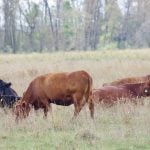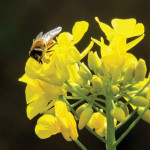
Tag Archives Insecticides

Chemical companies pitch bug-killing options
Some environmentalists say just switching to new products won’t solve the underlying problem

Neonic makers respond to Health Canada actions
The plan is to phase out imidacloprid while clothianidin and thiamethoxam, popular in seed treatments, will undergo a special review

Flight simulator shows pesticide effects
High-tech approach at the University of Saskatchewan uses virtual reality more common to video games

Honeybee colonies and production are up
Mitigation measures implemented in 2014 appear to be working

Alfalfa weevil levels rapidly decline, high levels of pea aphids still seen
Manitoba Insect & Disease summary for July 13

Study finds not all neonics equal when it comes to risks to bees
Clothianidin, the active ingredient in Poncho and Prosper, may have got a bad rap

Non-crop plants source of most pesticide contamination of bees
One of the most common sources of pollen contamination is home pest control products

Vital to food output, pollinators face rising risk
A new global study explores the concerns over pesticides and loss of habitat

What does ‘science based’ mean?
Industry and government must adjust to new findings, but policies should not be based on the latest Internet trend

Flea beetles, cutworms top list of insects bugging Manitoba farmers in 2015
Alfalfa weevils, army worms, corn borer, soybean aphids and lygus bugs showed up in some fields too


